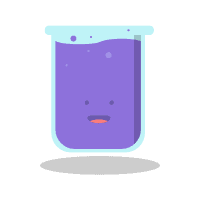
TEKS Biology High School - B.5.D: Diseases
Quiz by TEKS Biology High School
High School - Biology
Science (2010)
Texas Essential Knowledge and Skills (TEKS)
Feel free to use or edit a copy
includes Teacher and Student dashboards
Measures 1 skill from
Measures 1 skill from
Track each student's skills and progress in your Mastery dashboards
With a free account, teachers can
- edit the questions
- save a copy for later
- start a class game
- automatically assign follow-up activities based on students’ scores
- assign as homework
- share a link with colleagues
- print as a bubble sheet
4 questions
Show answers
- Q1Oncogenes are mutated forms of genes. Oncogenes can transform a cell into a tumor cell. Some tumor cells are benign, while others are malignant. How does the presence of an oncogene lead to the formation of a tumor?ATP production is inhibitedCell division is unregulatedSomatic cell growth is inhibitedAntibody activity is unregulated30sB.5.D: Diseases
- Q2Cells typically respond to DNA damage in three ways: by ceasing to grow and divide until the damage is repaired, by permanently ceasing to grow and divide, or by dying. In 2010 a group of scientists reported that a certain kind of immune reaction can cause DNA damage that leads to a fourth response. DNA damage can turn off genes involved in cell-signaling pathways. Turning off these genes can cause less-mature cells to divide too rapidly, often leading to the development of —allergieshemophiliacardiovascular diseasetumors30sB.5.D: Diseases
- Q3Atherosclerosis is a disease that obstructs blood flow and, therefore, oxygen supply to target organs. A major component of atherosclerosis is the excessive reproduction of smooth muscle cells of the blood vessels. Certain drugs may have the potential to reverse or prevent the unregulated reproduction of the diseased blood-vessel cells. Which of these processes is the most likely target of these drugs?DNA transcriptionErythroblast differentiationCellular respirationCell division30sB.5.D: Diseases
- Q4The diagram below represents the cell cycle. When cells leave the cell cycle, they exit during G1 phase and then enter G0 phase, a resting period. Most normal cells can leave G0 phase and reenter the cell cycle at G1 phase before entering S phase. Cancer cells are different because they cannot enter G0 phase and are likely to do which of the following?Die after completing mitosisMutate during G1 phaseFail to complete S phaseRepeat the cell cycle continuously30sB.5.D: Diseases